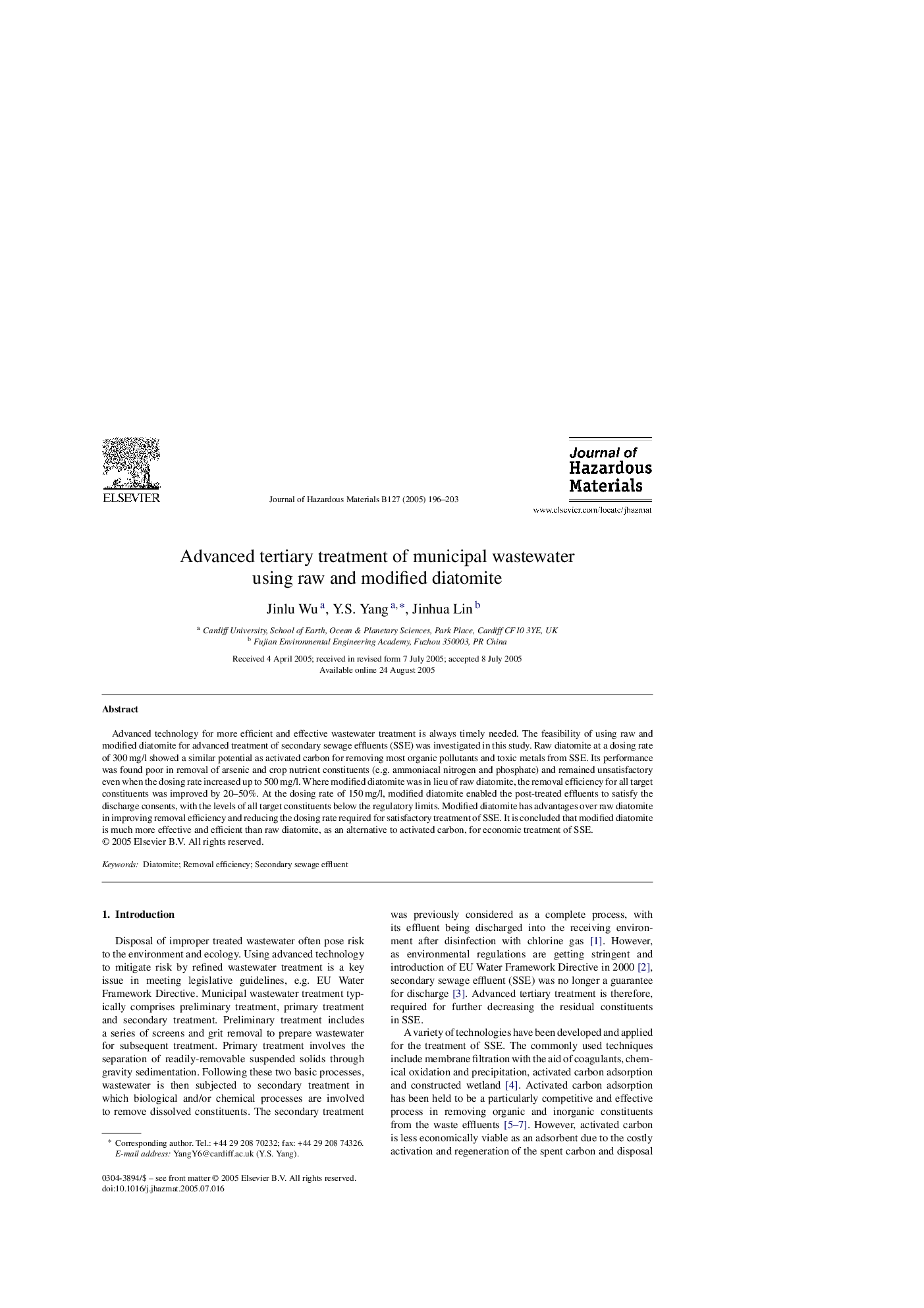| Article ID | Journal | Published Year | Pages | File Type |
|---|---|---|---|---|
| 9674076 | Journal of Hazardous Materials | 2005 | 8 Pages |
Abstract
Advanced technology for more efficient and effective wastewater treatment is always timely needed. The feasibility of using raw and modified diatomite for advanced treatment of secondary sewage effluents (SSE) was investigated in this study. Raw diatomite at a dosing rate of 300Â mg/l showed a similar potential as activated carbon for removing most organic pollutants and toxic metals from SSE. Its performance was found poor in removal of arsenic and crop nutrient constituents (e.g. ammoniacal nitrogen and phosphate) and remained unsatisfactory even when the dosing rate increased up to 500Â mg/l. Where modified diatomite was in lieu of raw diatomite, the removal efficiency for all target constituents was improved by 20-50%. At the dosing rate of 150Â mg/l, modified diatomite enabled the post-treated effluents to satisfy the discharge consents, with the levels of all target constituents below the regulatory limits. Modified diatomite has advantages over raw diatomite in improving removal efficiency and reducing the dosing rate required for satisfactory treatment of SSE. It is concluded that modified diatomite is much more effective and efficient than raw diatomite, as an alternative to activated carbon, for economic treatment of SSE.
Related Topics
Physical Sciences and Engineering
Chemical Engineering
Chemical Health and Safety
Authors
Jinlu Wu, Y.S. Yang, Jinhua Lin,
